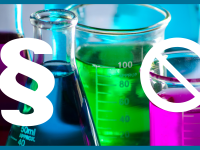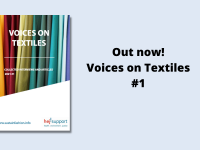Regulations in the EU related to textiles

A key regulation in the EU is the Regulation N°1007/2011 on textile fiber names and the marketing of the fiber composition of textile products, and it has been applicable in the EU since 2012. It sets out common rules on fabric names and compositions as well as the standards textile labeling. For example, the label must contain the fiber composition in the official language where the product is being sold. Additionally, the regulation sets standards on how national authorities should proceed with the conformity of control of these different rules.1
Later in 2013, the Best Available Techniques (BAT) Reference Document for the Tanning of Hides and Skins regulates practices related to tanning processes in the EU was adopted. The so called “BREF” comes as an application of the Industrial Emissions Directive 2010/75 and specifies the currently available and most performant technologies in the field of integrated pollution prevention and control. This regulation is geared towards the environmental aspects of the textiles industry.2
Another important regulation of note is the General Product Safety Directive (2001/95/EC), applicable in the EU since 2002 and which had its latest update in 2010. It applies in general to all consumer goods and thereby applies to textiles. However some product groups like toys are regulated under specific directives. It sets out rules on which products should be classified as a safe product and details which types of unsafe products should not be sold in the internal market. For that purpose, the Directive also puts into place a European alert system called RAPEX that lists all products that have been recalled by national authorities.3 The General Product Directive has to be read under the consideration of the REACH Regulation 1907/2006, which is a chemical regulation that has established and continuoulsy updates a list of regulated chemicals in the EU.4
In REACH Annex XVII a number of chemicals related to the textile production are listed:
- Certain flame retardands in textiles
- Chromium VI in leather
- Azocolorants and azo dyes
- PAHs in rubber and plastics
- Cadmium in plastics, coated materials
- NPEO in washable textiles (as of February 2021)
- 33 CMR substances in textile consumer goods (as of November 2020)
- as well as PFOA, except textiles for protection of workers (as of July 2020), via the POPs Directive
Furthermore, the Regulation (EC) No 834/2007 on organic production and labelling of organic products and repealing entered into force in 2008 and will come to a close in 2021. Although this regulation is not directly related to textiles, it concerns those which are made out of organic fibers. It puts forth common rules in the EU related to the definitions and the labeling standards for organic products.5
Finally, other legislations6 related to textiles and clothing include:
Most recently in 2021, the European Commission has launched its plans for a new Sustainable Textiles Strategy.7
References
- To learn more about the regulation, please refer to: https://eur-lex.europa.eu/legal-content/EN/LSU/?uri=CELEX:32011R1007&qid=1621402779084
2. To learn more, please refer to: https://publications.jrc.ec.europa.eu/repository/handle/JRC83005
3. To learn more, please refer to: https://eur-lex.europa.eu/legal-content/EN/LSU/?uri=CELEX:32001L0095
4. Please refer to our article on NPE to learn more about the REACH Regulation: https://sustainfashion.info/eu-regulation-says-farewell-to-npe-in-new-textiles/
5. To learn more, please refer to: https://eur-lex.europa.eu/legal-content/EN/LSU/?uri=CELEX:32007R0834&qid=1621403196092
6. Information extracted from the EU Commissions Website: https://ec.europa.eu/growth/sectors/fashion/textiles-clothing/legislation/other_en
7. To learn more about this strategy, please refer to our HEJ Report: https://hej-support.org/eu-commission-roadmap-on-a-sustainable-textiles-strategy/






